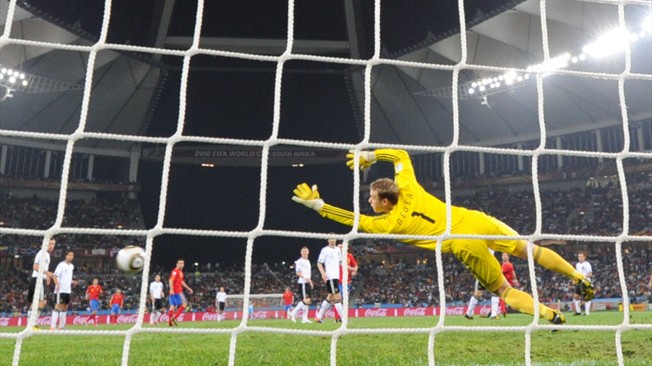Cristina Fernandez de Kirchner, the president of Argentina, was visiting the United States in the autumn of 2012. A part of her itinerary included speeches at the Harvard and Georgetown universities.
Students at these universities asked her about the rate of inflation in Argentina. As Bill Bonner writes in his new book Hormegeddon—How Too Much of a Good Thing Leads to Disaster, “Her bureaucrats put the consumer price index—at less than 10%. Independent analysts and housewives know it as a lie. Prices are rising at about 25% per year.”
Fernandez turned the tables at a press conference and asked her accusers: “Really, do you think consumer prices are only going up at a 2% rate in the US?”
This is a very important question to ask given that inflation is one of the most important numbers that are put out in the public domain. As Bonner writes “The ‘inflation’ number is probably the most important number the number crunchers crunch, because it crunches up against most of the other numbers too.”
What does Bonner mean by this? If your house price has doubled and if the price of everything else doubled as well during the same period, then you haven’t made any gains at all. The same stands true for your salary as well.
At a broader level, the economic growth (as measured by the growth in the gross domestic product (GDP)) is also adjusted for inflation. So, if the growth is 8% and inflation is also 8%, then there is no real growth. For real growth to happen the rate of growth has to be greater than the rate of inflation.
The point being that the rate of inflation is used to correct distortions that creep into other numbers. As Bonner writes “In pensions, taxes, insurance, and contracts, the CPI[consumer price inflation] number is used to correct distortions caused by inflation. But if the CPI number is itself distorted, then the whole [thing] gets twisted.”
Moral of the story: It is very important to measure the inflation number correctly. But is that really happening in the United States? As Nick Barisheff writes in $10,000 Gold—Why Gold’s Inevitable Rise Is the Investor’s Safe Haven, “The need to distort actual values of inflation became even more important once governments began prodding social programs and indexed government pensions [i.e. government pension went up at the rate of inflation]. A single-point rise in the official rate of inflation would likely cost the U.S. government hundreds of billions of dollars in indexed government pension payments.”
The Boskin Commission was set up in 1995. It was formally called the Advisory Commission to Study the consumer price index. The commission came to the conclusion that the consumer price index overstated inflation. “These findings also concluded that since the CPI was used to measure indexed pensions, the projections for budget deficits were too large,” writes Barisheff.
The recommendations of the commission changed the way inflation was measured in the United States. As Barisheff writes “The changes implemented after the Boskin Commission’s report were significant, with the main distinction being that the CPI used to measure a “fixed standard of living” with a fixed basket of goods. Today, it measures the cost of living with a constantly changing basket of goods, measured with metrics that are themselves constantly changing.”
This change in methodology led to the inflation being understated due to various reasons. A World Gold Council report titled Gold Investor: Risk Management and Capital Preservation released by the World Gold Council points out “The weights that different goods and services have in the aforementioned indices do not always correspond to what a household may experience. For example, tuition has been one of the fastest growing expenses for US households but represents only 3% of CPI (consumer price index). In practice, tuition costs correspond to more than 10% of the annual income even for upper-middle American households – and a higher percentage of their consumption.”
Then there is the issue referred to as “hedonic” adjustments. Let’s say you go to a buy a computer. The computer is being sold at the same price as last year. But its twice as powerful. “Now you are getting twice as much computer for the same price. You don’t really need twice as much power. But you can’t buy half a computer. So, you reach in your packet and pay as much as last year,” writes Bonner.
Those calculating inflation look at the scenario differently. They assume that since the new computer has more power, it has basically gone down in cost. “This reasoning does not seem altogether unreasonable. But a $1,000 computer is a substantial part of most household budgets. And this “hedonic” adjustment of prices exerts a large pull downward on the measurement of consumer prices, even though the typical household lays out almost exactly as much one year as it did last,” writes Bonner.
Further, hedonic adjustment does not take into account the rapid change in technology. As Barisheff points out “Hedonics overlooks hidden inflationary events, such as the rapid pace of technological development and lower production standards, which combined mean we need to replace appliances more often. In the 1960s, we bought one home telephone every decade, if that. We purchased a new television perhaps a little more frequently. Now we are changing our tech devices every couple of years. Hedonics, to be, fair, should account for this extra cost, but it does not.”
Other than hedonics, the substitution bias is at work as well. In this case, it is assumed that consumers substitute “cheaper goods for more expensive goods when relative prices change.” As Barisheff writes “The government is saying that when steak gets too expensive, people will forgo steak for hamburger. Somehow, this does not account for the fact that steak is getting more expensive, or that consumers do not automatically substitute.” Using, susbstitution, the government determined that food prices rose by 4.1% between 2007 and 2008. Nevertheless, the American Farm Bureau which tracks exactly the same basket of goods said prices rose by 11.3%.
Long story short, the inflation as it is being measured is being under-declared. Bonner points out that if they measured inflation now like they did in 1980, the rate of inflation in the United States would have been 9% and not 2%.
And if that were the case a lot of other things would change. If inflation would have been 9% and 2%, the Federal Reserve of the United States and other central banks around the developed world would not have printed the quantum of money that they have.
Economist John Mauldin in a recent column titled The End of Monetary Policy estimates that central banks have printed $7-8 trillion since the start of the financial crisis.
This was done primarily to ensure that with so much money floating around the interest rates would continue to remain low. At low interest rates people would borrow and spend. This would create some inflation. Looking that prices were going up, people would come out and shop, so that they don’t have to pay more later.
What has happened instead is that financial institutions have borrowed money at low interest rates and invested it in financial markets all over the world.
Nevertheless, if the inflation was 9% and not less than 2% as it stands now, central banks wouldn’t have printed all the money that they have in the first place.
This leads Bonner to ponder that “the problem with the “inflation” number runs deeper than just statistical legerdemain.” “It concerns the definition of inflation itself. Does the word refer only to rise in consumer prices? Or to the rise in the supply of money? The distinction has huge consequences. Because, in years following the 08′-09′ prices, it was the absence of the former that permitted central banks to add so much to the latter…As long as consumer price inflation didn’t manifest itself in a disagreeable way, central bankers felt they cold create as much agreeable monetary inflation as they wanted,” writes Bonner.
And that is something worth thinking about.
The article originally appeared on www.FirstBiz.com on Dec 2, 2014
(Vivek Kaul is the author of the Easy Money trilogy. He tweets @kaul_vivek)




